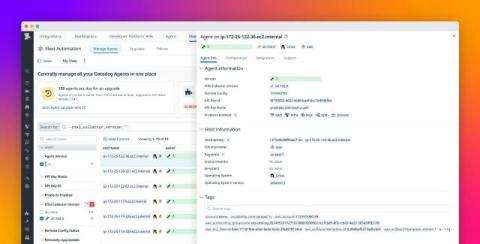Datadog on LLMs: From Chatbots to Autonomous Agents
As companies rapidly adopt Large Language Models (LLMs), understanding their unique challenges becomes crucial. Join us for a special episode of "Datadog On LLMs: From Chatbots to Autonomous Agents," streaming directly from DASH 2024 on Wednesday, June 26th, to discuss this important topic. In this live session, host Jason Hand will be joined by Othmane Abou-Amal from Datadog’s Data Science team and Conor Branagan from the Bits AI team. Together, they will explore the fascinating world of LLMs and their applications at Datadog.











